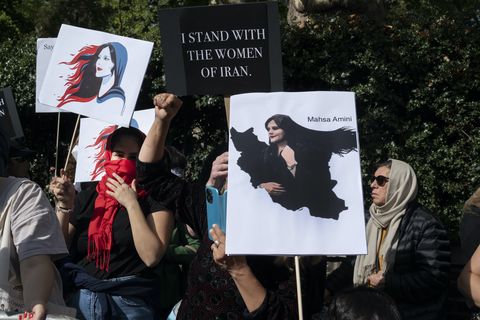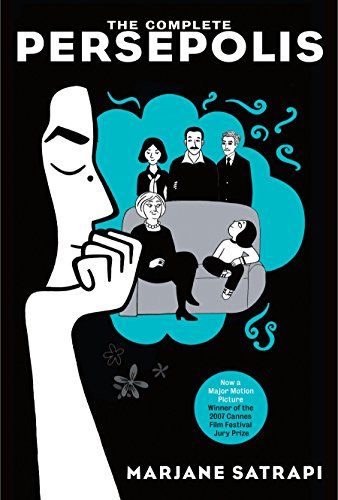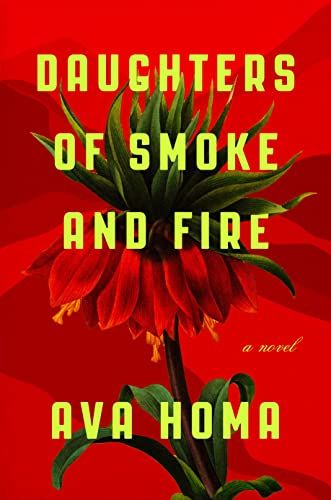Mass protests have erupted across Iran after the death of 22-year-old Mahsa Amini, who died in police custody earlier this month. On September 13, the young woman, originally from the city of Saqqez, was apprehended by “morality police” in Iran’s capital of Tehran and taken to a “re-education center” for allegedly not wearing her hijab properly. At the time of her arrest, she was with her brother, Kiaresh Amini.
According to a report from the United Nations, Amini was brutally beaten by the police and taken to the Vozara Detention Center. While there, Amini collapsed and fell into a coma. She was transferred to Kasra Hospital, where she died on Friday, September 16. Iranian authorities claimed Mahsa died of a heart attack, but, according to CNN, her family affirmed she had no pre-existing heart conditions.
It’s widely believed that Amini was tortured and killed by the police. Her father, Amjad Amini, said that doctors forbade him from seeing his daughter after she died in the hospital. “They’re lying. They’re telling lies. Everything is a lie… no matter how much I begged, they wouldn’t let me see my daughter,” he told BBC Persia on September 21, per CNN.
More From Seventeen

Amini’s death has sparked outrage in Iran, mobilizing thousands — especially women and young people — to take to the streets and demand an end to repression and violence against women. Below, we explain the latest on the demonstrations, how to help, where to donate, and how you can stay informed on the protests in Iran.
Latest Updates on Protests
Protests against the Iranian government have spread to dozens of Iranian cities since the death of Mahsa Amini. It’s reported by state media that 35 people have been killed, per The New York Times, but it’s believed by human rights organizations that the death toll is much higher. As of September 27, BBC reports that 76 protestors have been killed.
Women and young people are at the forefront of these protests. After the 1979 Iranian Revolution, women have been subjected to severe, oppressive restrictions. According to The Washington Post, the regime has forced Iranian women to wear a hijab for nearly four decades. Since Amini’s death, women have taken off their headscarves, set them on fire in the streets, or cut their hair in public, in a remarkable act of defiance.
The Iranian government cut off internet access in the country last week, according to Politico, to restrict communication and suppress the proliferation of footage from protests. In response, the United States Department of Treasury announced that it’d increase internet access to Iran.
“As courageous Iranians take to the streets to protest the death of Mahsa Amini, the United States is redoubling its support for the free flow of information to the Iranian people,” Deputy Secretary of the Treasury Wally Adeyemo said in a press release. “Today, Treasury is announcing the expansion of Iran General License D-2, which will expand the range of internet services available to Iranians. With these changes, we are helping the Iranian people be better equipped to counter the government’s efforts to surveil and censor them.”
How to Help
There are a number of ways to help the people of Iran and show your solidarity. You can check social media to find a protest near you, start a local demonstration, and share and repost fact-based information to lift the voices of those inside Iran on Instagram, Twitter, and TikTok. You can also donate to human rights organizations such as the Center for Human Rights in Iran, the Abdorrahman Boroumand Center, and Amnesty International, which are fighting for the rights and freedoms of all Iranian people.
You can also contact your representatives to speak out against the Iranian government’s human rights atrocities.
Who to Follow on Social to Stay Informed
Wondering how to best stay up-to-date and informed on what’s happening in Iran, and why citizens are protesting? Use social media to follow those who are breaking down the issues and sharing the efforts of Iranian citizens in the streets, bravely demanding accountability from their government. Here are some accounts to follow.
Read These Books to Learn More
The titles below are moving, powerful depictions of life in Iran before and after the 1979 revolution, chronicling the experiences of women during times of political upheaval.
Leah Campano is an assistant editor at Seventeen, where she covers pop culture, entertainment news, health, and politics. On the weekends, you can probably find her watching marathons of vintage Real Housewives episodes or searching for New York City’s best almond croissants.









